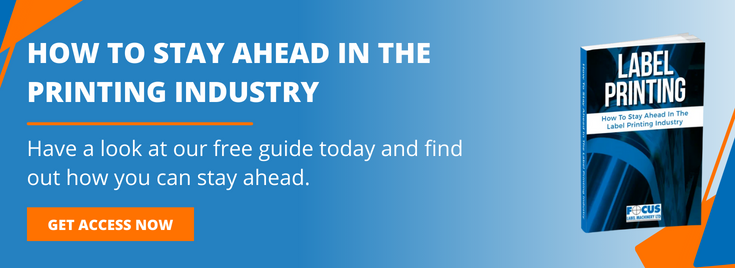
Increasing the speed of a printing press is a common goal for many printing businesses. After all, the difference between 300 fpm and 600 fpm, when evaluated over the course of a whole year, can make an enormous difference to the number of items that are printed and, consequentially to your profits. While modern flexo printing systems, such as those provided by Focus, deliver excellent speeds as standard, some measures are possible to increase the speed of your press. However, it is important to take care here, as increasing the speed of your printing press can also lead to print defects and other unforeseen problems. With this in mind, let’s look at a few ways you can increase speed safely.
While modern flexo printing systems, such as those provided by Focus, deliver excellent speeds as standard, some measures are possible to increase the speed of your press. However, it is important to take care here, as increasing the speed of your printing press can also lead to print defects and other unforeseen problems. With this in mind, let’s look at a few ways you can increase speed safely.
Anilox Adjustments
The first and perhaps most obvious way to improve press speed is to make adjustments to the anilox roller. The anilox cell to dot-on-plate ratio can have a significant bearing on speed, so choosing the right anilox roll for the specific printing work you are carrying out can make a big difference.
When a heavier layer of ink is needed, low line anilox rolls work best, whereas fine detail is performed better by a high line anilox. Additionally, if you are using water-based inks, hexagonal cells or diamond cells on your anilox roll will generally perform better than rounder cells.
Substrate Adjustments
In addition, improvements to the speed of your printing press can also be made by making subtle adjustments to your substrates’ surface tension. Increased surface tension can improve ink drying speed and ink flow, increasing overall productivity. The balancing act is ensuring that the extra surface tension doesn’t lead to unwanted printing defects. For this reason, adjustments should be made carefully and results be monitored closely.
Servo Drive
Finally, the speed of your printing press can also be enhanced by retrofitting servo drive technology, as opposed to chain drive technology. A semi-automated and computer controlled servo drive allows for greater precision, fine adjustments within each print cycle to optimise print speed, and helps protect your press from the effects of wear and tear.
Our d-Flex digital label printing series, for example, utilises a full servo drive and all machines are tailor made to suit customer print requirements. If you would like more advice on how to refine your printing processes, please give us a call, or download our eBook; How to Stay Ahead in the Label Printing Industry.






